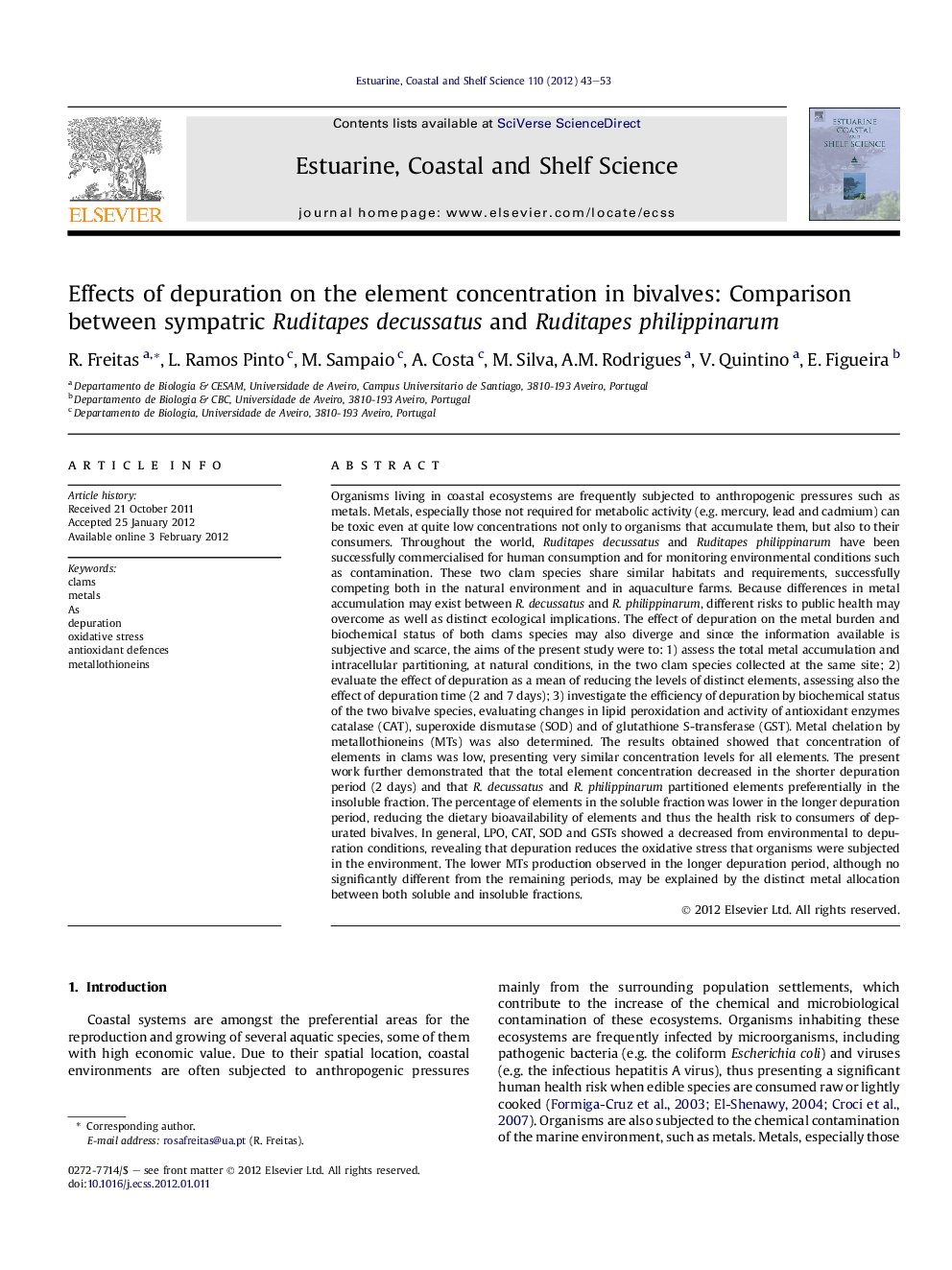| کد مقاله | کد نشریه | سال انتشار | مقاله انگلیسی | نسخه تمام متن |
|---|---|---|---|---|
| 4540111 | 1626685 | 2012 | 11 صفحه PDF | دانلود رایگان |

Organisms living in coastal ecosystems are frequently subjected to anthropogenic pressures such as metals. Metals, especially those not required for metabolic activity (e.g. mercury, lead and cadmium) can be toxic even at quite low concentrations not only to organisms that accumulate them, but also to their consumers. Throughout the world, Ruditapes decussatus and Ruditapes philippinarum have been successfully commercialised for human consumption and for monitoring environmental conditions such as contamination. These two clam species share similar habitats and requirements, successfully competing both in the natural environment and in aquaculture farms. Because differences in metal accumulation may exist between R. decussatus and R. philippinarum, different risks to public health may overcome as well as distinct ecological implications. The effect of depuration on the metal burden and biochemical status of both clams species may also diverge and since the information available is subjective and scarce, the aims of the present study were to: 1) assess the total metal accumulation and intracellular partitioning, at natural conditions, in the two clam species collected at the same site; 2) evaluate the effect of depuration as a mean of reducing the levels of distinct elements, assessing also the effect of depuration time (2 and 7 days); 3) investigate the efficiency of depuration by biochemical status of the two bivalve species, evaluating changes in lipid peroxidation and activity of antioxidant enzymes catalase (CAT), superoxide dismutase (SOD) and of glutathione S-transferase (GST). Metal chelation by metallothioneins (MTs) was also determined. The results obtained showed that concentration of elements in clams was low, presenting very similar concentration levels for all elements. The present work further demonstrated that the total element concentration decreased in the shorter depuration period (2 days) and that R. decussatus and R. philippinarum partitioned elements preferentially in the insoluble fraction. The percentage of elements in the soluble fraction was lower in the longer depuration period, reducing the dietary bioavailability of elements and thus the health risk to consumers of depurated bivalves. In general, LPO, CAT, SOD and GSTs showed a decreased from environmental to depuration conditions, revealing that depuration reduces the oxidative stress that organisms were subjected in the environment. The lower MTs production observed in the longer depuration period, although no significantly different from the remaining periods, may be explained by the distinct metal allocation between both soluble and insoluble fractions.
► Total concentration of all elements decreased in the 2 days depuration period.
► Both species partitioned elements preferentially in the insoluble fraction.
► Depuration reduced the dietary bioaccessibility of elements and thus the health risk to consumers.
► Depuration reduces the oxidative stress experienced by the organisms in the environment.
► The lower MTs levels may be explained by the higher allocation of elements in the insoluble fraction.
Journal: Estuarine, Coastal and Shelf Science - Volume 110, 10 September 2012, Pages 43–53